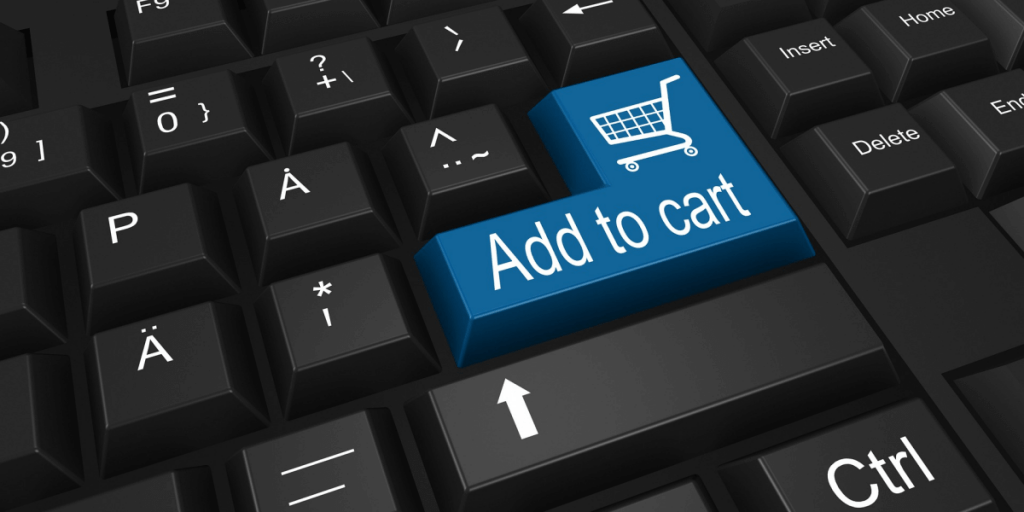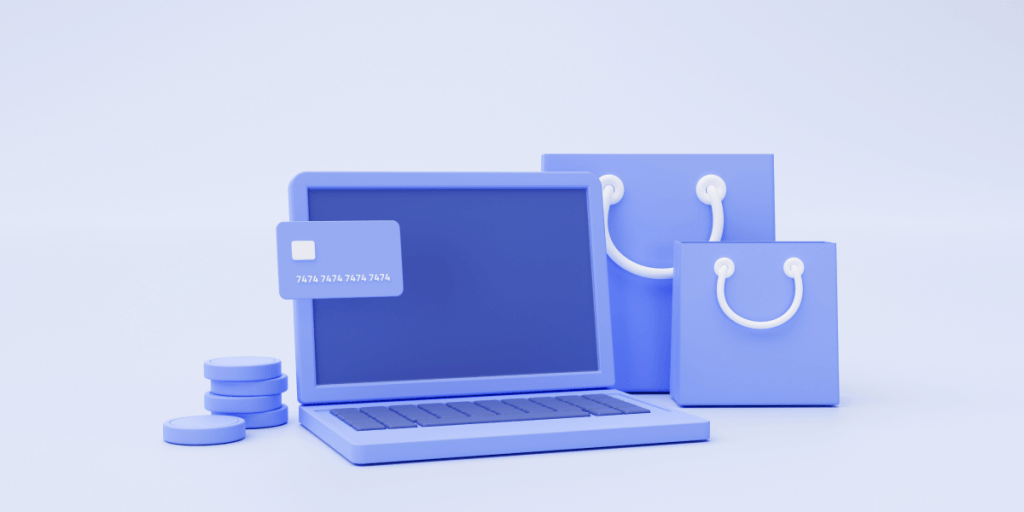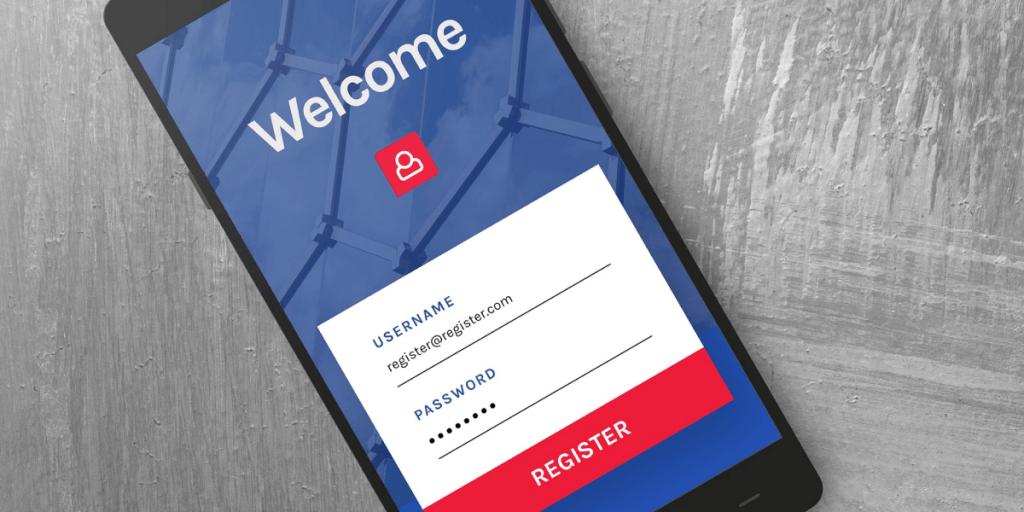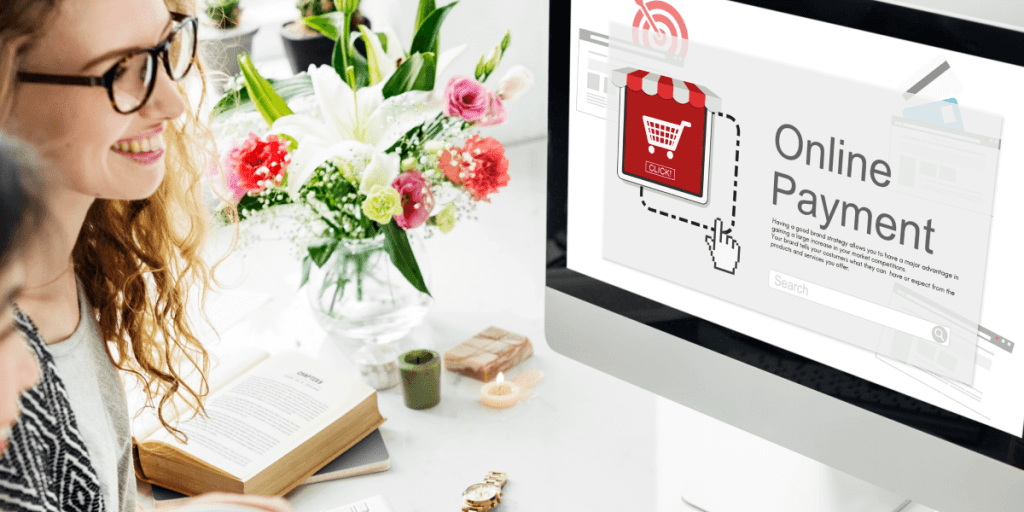What Do Customers Want From Ecommerce Websites? 10 Must-Have Features to Keep Your Customers Engaged and Ensure Business Success
The eCommerce market is one of the most competitive ones. In 2022, the number of eCommerce websites is estimated to be 24 million across the globe. In this competitive environment, online businesses can struggle with attracting potential customers and offering a fantastic user experience. The core of your business growth and success is the customer. Therefore, customer loyalty and customer satisfaction are critical to a healthy and strong business.
This article will help you understand what customers want from an eCommerce business and what you can do to have a solid online presence and a fantastic website that converts.
Who Are the Customers of eCommerce Websites?

As we mentioned before, buyers are the ones that decide how successful a business can be. Therefore, meeting their needs and understanding the user intent are core approaches for online stores.
Before launching your eCommerce platform or in case you want to improve and go for a website redesign, it is crucial to understand who is interested in your business niche.
Let’s explore who the customers of an eCommerce business are and how to attract and convert them.
The Browser or the Window Shopper
These types of users like to do their research before deciding to buy from an online business. They want to explore and visit various websites, compare prices, read product information, etc. If the company has a brick-and-mortar store, they will definitely visit it and try products on. However, when it comes to the online environment, their behaviour is to add all the products they like into the cart, but without the intention of buying them.
To encourage them to buy, you should know how to welcome them. You can provide assistance through a chatbot or add an entry or exit pop-up that offers them a little discount on their first order if they sign up for your email list.
The window shoppers or browsers are the ones that become loyal customers. Pay attention to them and try not to miss any opportunity to convert them.
Discount Hunters
Discount hunters are very sensitive to sale tactics and always look for the greatest deals and offers. Discount seekers are sensitive to the product price and will look for deals even when you don’t run them in your store.
To attract this type of buyer, you should highlight what they save on a deal, and show the original price and the discounted one. Fash sales, stock clearance, or discount vouchers are powerful tools for online retailers to convert discount hunters into paying customers. Also, free shipping is a great option to make more sales, and you can set a fixed amount for a free shipping purchase. For example, offer free shipping for orders bigger than 30 pounds. Great offers and discounts will always boost your sales.
Impulsive Buyers

Impulsive buyers are the “ideal clients” that eCommerce companies what to satisfy. Impulsive shoppers best respond to recommendations. They are also known as emotional buyers that make spontaneous purchases just because an individual product appeals to them. They usually look for additional products to complete their first choice if they fancy a particular product.
Impulsive buyers are an excellent opportunity for your business to cross-sell and offer them personalised product recommendations. A personalised customer journey will contribute to converting emotional buyers. Show them the new products in your store or related products and use content to make them irresistible.
Hesitant Buyers
Because of the ferocious competition in the market, the search results are returning hundreds of products, and various eCommerce businesses with similar products will pop up. For hesitant buyers, choosing the right store is difficult, and they need guidance.
To convince them to buy from you, assist them through a chatbot or in-store support, have a flexible return policy, and your product description should include all the important information that a buyer might need. Also, a custom product field with frequently asked questions is ideal.
You can easily convert a hesitant buyer into a happy customer. If you manage to do so, you will gain one loyal client.
Research Buyers
Research buyers or mission-driven buyers are the ones that purchase products for three reasons, need, purpose or price point. They are the most difficult to please, but they will become regular clients if you manage to do it. Research buyers are looking for a great user experience and a personalised user journey. They want to feel taken care of.
This type of buyer lacks patience or time. You can offer the option to purchase online and pick up the order from your physical store. You can also implement cross-selling techniques.
Loyal Customers
Loyal customers are the best kind of clients. They already know your brand and love shopping from your eCommerce website. Therefore, you should do anything you can to keep them happy. Customised and personalised experiences will keep them close for a long time.
The best way to show your appreciation is to implement loyalty programs. You can give them rewards or loyalty points on each purchase. Loyalty points can be redeemed for a discount.
You want and need this type of customer as they are the best promoters of your business. The more satisfied they are, the more they will buy and the more recommendations you will get. Do not forget that word of mouth is a free and effective marketing strategy.
What Do Customers Want From Ecommerce Websites?

When deciding upon an eCommerce solution, whether it is an eCommerce website builder or a custom eCommerce website development, it should be created and designed from a customer’s point of view. Business owners must understand the importance of knowing what users want and what makes them buy because you are building the website for them.
In this chapter, we will explore the ten key features that every user wants in an eCommerce website:
1. Mobile-friendly websites
75% of customers purchase on their mobile phones because it saves time and is more convenient. However, 90% of mobile shoppers say that mobile eCommerce experiences can be improved. More than that, Google has a mobile-first index, meaning that your website is firstly crawled, indexed and ranked based on your mobile version.
A responsive design is a must nowadays. You are going to lose customers if they are unable to access your website at the exact moment they are ready to buy. Smartphone conversion rates are up 64% over desktop conversion rates.
In this current environment, online shopping must be fast and convenient. You want to bring your products to customers at the exact moment when a purchase decision has been made.
Aside from a mobile-friendly website, you can also think about creating your mobile app. This is another way to keep your brand on top of the client’s mind. By placing your brand logo on their smartphones, they can browse through your products with just a finger tap at any time of the day. You can also use push notifications to remind them of your current offers.
2. Fast-loading website pages
People notice immediately when they access a fast website. All the pages are loading in no more than two seconds. All the information is delivered and can be accessed in a blink of an eye. Users will notice this and have no frustrations when navigating it. We consider this functionality a must-have feature because it helps boost sales, but it also gives a flawless user experience.
3. Eye-candy eCommerce website design
An online store should look and feel clean, organised and trustworthy. Think of when you enter a messy, disorganised physical store with an uninvited atmosphere overall. Now think of a clean and spacious store that gives you an inviting feeling. Which one will you choose to shop from? The same rules apply to online stores. When your web design is clean, your products are organised, and it feels like a well-managed online shop, visitors will automatically assume that your products are better. We strongly advise you to invest in your design and use your brand colours. Every pixel, any piece of visual content and every word matters. When users see that you pay attention to these details, they think that a trustworthy company is behind the website. Focus on UX/UI design and use it to your advantage.
4. User-friendly website architecture, navigation, and search
Website architecture is the key to helping users find products quickly and in a logical, organised way. You can organise your content starting with the most popular product categories or brands because some people search by categories and others by brand. Your product catalogue must make sense. User-friendly navigation, site search, and product filtering are key features of an exquisite user experience.
Let’s get more into what these features should look like:
- Use breadcrumbs. These will show users their location on your website. When a website sells thousands of products, they must be organised in a hierarchical order. Breadcrumbs are a visual aid that facilitates navigation by letting people move between product catalogues, categories and homepage. They are not only of help to people but also to help Google understand the structure of your website.
- Implementing a search bar to bar enables users to quickly and easily find the products they are looking for. Search engines powered by artificial intelligence allow the prediction of a user’s query. Site searches can be monitored and tracked using Google Analytics.
- Use advanced product filtering options to help clients narrow your products based on their interests. This way, they will skip the website’s list of categories and products they do not need.
Website architecture, navigation, and search functionalities improve website usability and facilitate purchasing.
5. Complete product pages
Product information must be organised in a clear and informative way. No one likes clutter and spending unnecessary time finding the needed information.
- The most important part of a product page is the high-quality images. They are the ones that make a customer want the product and open the page. Eye-catching, professional and high-quality images should also be optimised for page speed. We advise you to present your product from different angles, enable the zoom-in functionality and even implement a 360-degree view.
- Another important feature for customers is the swatch option or combinations of product variables. Swatches are thumbnail images that show various colours, patterns and shapes of product variants. When selected, this feature allows users to see instantly what the product looks like.
- An engaging product page must contain details about the product, such as a title, description, components, particularities, functions, price, availability, quantity change field, etc. These details show the value of the product and will help users understand what they purchase.
- Next, you should include an action button (CTA button). Add to cart button should be visible, and usually, you can find it next to the product image. We strongly recommend using a different button colour, so it stands out on the product page. You can add any other message to it, but make sure it is using words such as “Now”, “Add”, “Buy”, etc. We do not recommend switching the button placement because users are accustomed to a specific design and might be confused about yours.
- Wishlists and compare functionalities are handy to online shoppers. Giving them the option to save a product if they want to buy it later. The compare feature can come in handy when customers are not sure of the brand or product they want to buy, so they can look at multiple items side-by-side and choose what fits them the best.
- Social sharing options are a great addition to your product pages. People can share their favourite products on the social media channel of their choice. Adding social sharing buttons or the option to send the link via email is also a great way to reach more audiences.
- Product description and specifications are fundamental for an eCommerce product page. We strongly recommend including all the main information a user might want. Do not hold back on sharing the specifications and product features.
- Product reviews are crucial in building trust in your products and convincing people to buy them. Customer reviews are mandatory for your business to gain more clients.
- Related products are a great way to display your best-sellers, exclusive items or complete the outfit pieces at the bottom of the product page. This section will encourage people to spend more time on your website and explore more.
6. User account

We recommend you encourage your website visitors to create a user account but do not force them to do so. Some prefer to checkout as guests, and others prefer to save all their information and credit card information to their accounts. Therefore, give them multiple possibilities, such as signing in with Facebook, Gmail, or Instagram and creating an account with the phone number or email address. When they create an account, ask them only for the necessary information such as name, surname, email, phone number and address. Also, it would help if you had the option for them to save their credit card details. If you run special deals or promotions on birthdays, ask them to add their date of birth, but do not make it mandatory. Make sure the contact form is auto-filled with their details when they check out and do not ask them to put their information again.
7. Shopping Cart & Checkout Page
A shopping cart feature is the number one requirement for all eCommerce websites. The shopping process should be fast and easy, and a summary of their products where they can add or remove products from their cart is essential. A shopping cart should have a clean visual design containing the company’s logo, the products and calls to action (checkout buttons). We strongly recommend implementing the abandoned cart feature. This feature notifies users they have forgotten products in their cart. When people do not finish their online purchases process, they will get a personalised email with the contents of their shopping cart. When a user receives a personalised notification, they can access the cart easily by clicking on the link provided in the email and completing their purchase.
When it comes to the checkout page, we advise you to let customers fill out only the information you need to send out their package, or if they already have the details saved in their account, pre-fill their checkout form. The second piece of advice is to implement one-page checkout. This means you will have one page only with your logo, a go-back button, and a summary of the order (product name, size, colour, quantity that should be changeable, images, shipping options, payment methods, shipping and billing address, prices, discounts, shipping cost, taxes, total cost,) and add discount coupons, promo codes or voucher field.
8. Shipping Methods
Consumers want low shipping costs. Ideally, it will be to offer free shipping. Shipping is the feature that separates eCommerce websites from other types of businesses. We strongly advise you to remember that the customer journey is not over after they complete a purchase. The delivery time is also critical; you should let consumers know the approximate time they will receive their order. The fastest, the better. Therefore, users should be able to select from multiple delivery options and fast delivery, and they must be able to see the shipping fees from the start. We recommend offering multiple shipping methods and ensuring the delivery company has a trustworthy reputation.
9. Payment Options

Besides shipping, online payment is another critical feature an eCommerce website should have. A trustworthy eCommerce online store should offer multiple secure payment gateways such as PayPal or Stripe, and they should be able to choose payment methods that they like. Also, make sure that you accept both Visa and Mastercard cards.
Not accepting certain payment options or having an unexpectedly high shipping cost will create frustration. Customers will go to your competitors if they give them more versatility and better prices.
More than that, we strongly recommend using security badges near the credit card information field to boost the trust in the security of your website and the payment process. Also, do not ask for account creation, and offer the checkout as a guest option.
After the online transaction, ensure you send out a receipt via email with the order number, the products they ordered and the email, phone number, and the business social profiles where they can contact you. You can also include a link to your FAQ and return policy page.
It is beneficial to send out an email when the order has been shipped where you mention the delivery date, the contents of the package, and the tracking number you got from the delivery company.
10. Customer Support
Not only the online chat is a top eCommerce feature, but having a team that deals with post-purchasing issues is a must. Customer support options will show clients that you value their time, their opinion and their level of satisfaction with your brands. The customer service team is a valuable component of your business, and our tip is to ensure the consistency of your message, policies and helpfulness among your employees.
Our Advice on How to Stand on Top of Competition and Keep Your Customers Happy

We strongly recommend you use your online eCommerce website as one of your marketing tools. Providing social proof and writing blog posts to educate your audience and promote your goods can increase your sales and engage your customers. Quality products and excellent customer relationships will allow you to gain more loyal customers. Additional payment methods, low shipping costs and a bonus for customers that already purchased from you will help you increase sales and improve your ROI. These aspects, along with email marketing, Google Shopping featured products, and other digital marketing activities will guarantee you a top spot in the industry. But, first and foremost, your eCommerce website should be flawless in functionality and features.
If you plan to launch your eCommerce business or mobile app and you are looking for a development company that can help you, contact us today! We have a vast experience in custom eCommerce solutions. We take your vision and transform it into something tangible and a sales-generating tool. Check out our portfolio and online reviews from current and previous partners. You can also check out our blog and learn more about eCommerce, custom development, marketing and web design.
Frequently Asked Questions
Shopping cart, wishlist, online payment and shipping options.
The loyal customers and the impulsive buyers.
An intuitive shopping experience, quality products, great prices, sales & discounts, fast shipping, multiple payment options, etc.
We recommend working with an expert, but it is not mandatory.